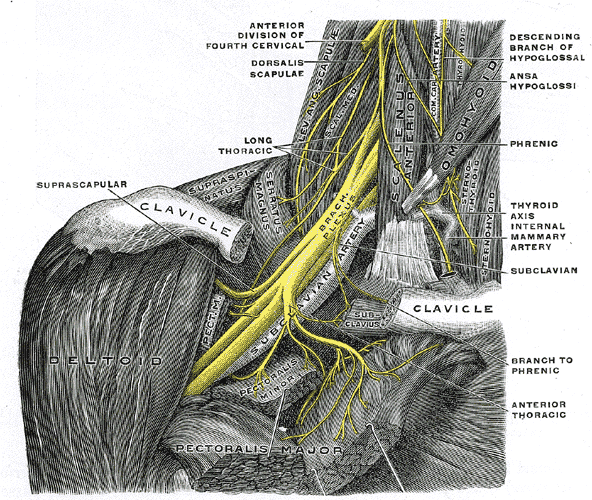Thoracic
Outlet Syndrome
 What is Thoracic
Outlet Syndrome?
What is Thoracic
Outlet Syndrome?
Thoracic Outlet Syndrome is a condition which involves
compression of either blood vessels (Subclavian Artery,
Subclavian Vein) or nerves (Brachial
Plexus) in the shoulder and back.
What are the
Symptoms of Thoracic Outlet Syndrome?
Common symptoms include pain throughout the arm
including the fingers, hands, and arms (especially the inner
side of arms), the neck, the pectorals and the trapezius /
rhomboid area of the back. In serious cases, the
affected hand may be noticeably colder, discolored (due to
lack of blood flow), and may even experience a 'pins and
needles' sensation (numbness).
What Causes Thoracic Outlet Syndrome to Develop?
Most commonly Thoracic Outlet Syndrome arises from physical
trauma causing acute pressure which results in compression of
the Subclavian Artery/Vein or more commonly
the Brachial Plexus. Another common
source is repetitive strain injury from work related tasks
(especially when repeatedly Overreaching
for the mouse or other work materials). Thoracic Outlet
Syndrome can also arise from spasms or enlargements which
result in compression of the affected blood vessels or
nerves.
What Movements Should be Avoided if you
have Thoracic Outlet Syndrome?
Try to engage in more movement and stretches as opposed to
static awkward postures. This can assist in relieving
pressure in the thoracic cavity. Ensure that good
posture is maintained while sitting (i.e. avoiding 'slouching'
or 'leaning' into the arm rest of the chair). It is also
often the case that performing tasks while fully Pronated
and with Wrist
and Finger Extension and minimal arm movement will also
increase discomfort.
What Types of Products can be Used to
Help Prevent or Reduce the Symptoms and Incidence of
Thoracic Outlet Syndrome?
Overreaching can be avoided by
Corner
Converters,
Writing
Surfaces,
Document
Holders,
Book
Holders and
Compact
Keyboards.
To help prevent Wrist
Extension, Articulating
Keyboard Arms or Adjustable
Height Workstations will ensure the proper height for
using keyboards and mice.
To assist in reducing Pronation,
consider Orthopedic
Mice or Vertical
Mice which reduce or eliminate the requirement to
pronate while mousing. Also consider Adjustable
Keyboards to reduce the degree of Pronation
required to keyboard.

 What is Thoracic
Outlet Syndrome?
What is Thoracic
Outlet Syndrome?